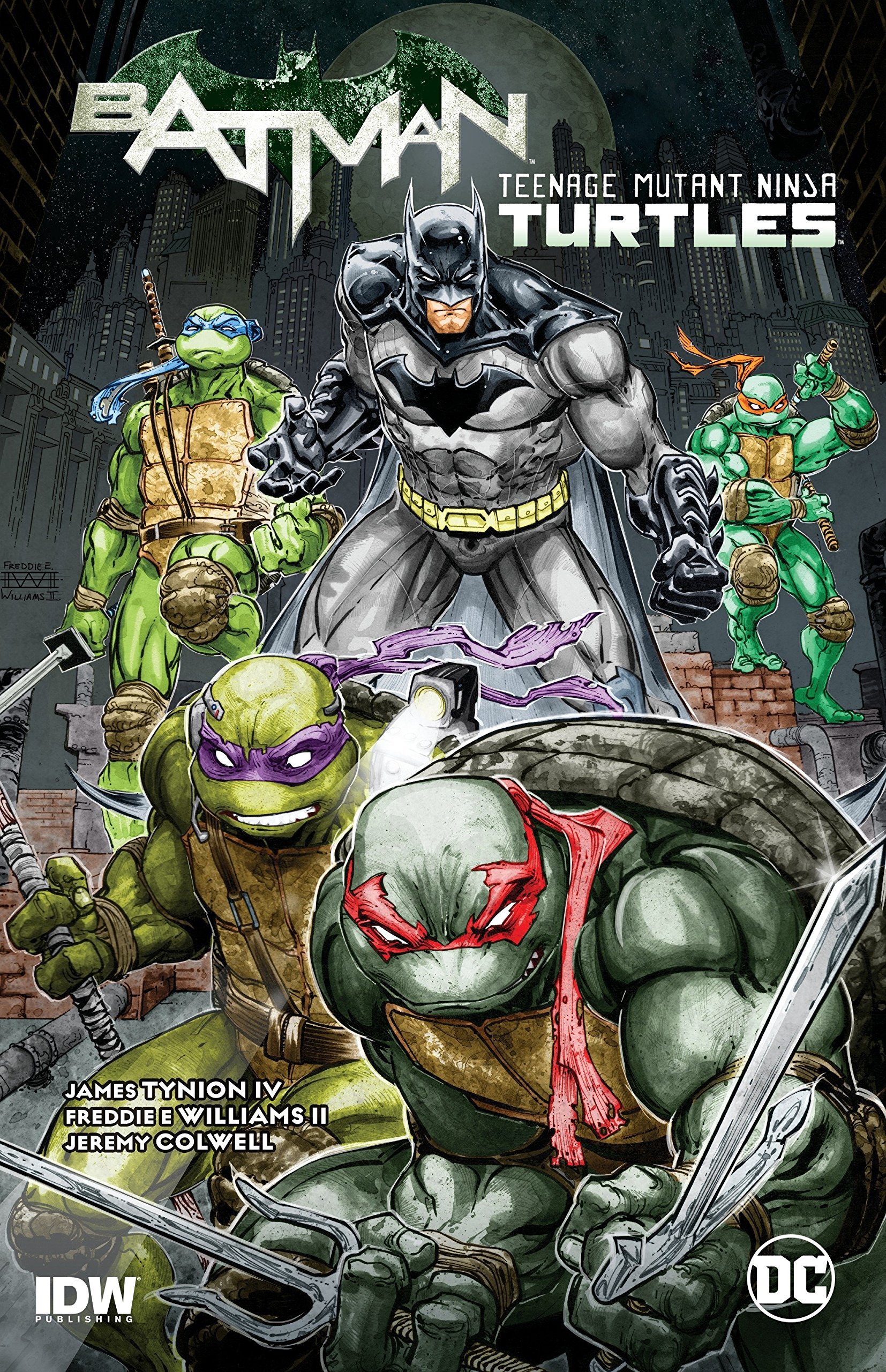Comics Comparisons: Static #7 and the Socratic Dialogue
By Jacob Cordas
Why It Was Okay: An Introduction
There comes a point in the middle of Static #7 that I think about at least once a month. It was published by DC/Milestone in December 1993, four months before I was born. I didn’t read it until about four years ago. And at least once a month, normally while reading comments on a New York Times facebook post*, I will think about the cross cutting dialogue between Virgil with his parents and Chez with her parents.
Up until this point in this phenomenal series written by Robert L. Washington III, Virgil has been fighting a radical black nationalist and a proto-hotep named Commando X. Using the recorded episodes of the public access television show Malcom’s 10, he has tracked down Commando X to an old apartment complex Virgil used to live in. In that show Commando X constantly cites conspiracy theories, specifically using a modified version of The Protocols of The Elders of Zion conspiracy theory to defend targeting Jews.
It’s worth noting at this point as well, Virgil has been seen repeatedly making anti-semetic remarks. In issue #5 for instance**, he remarks, “We-ell, nobody's blaming the Jews for being successful. They worked hard and stuck together. But now they should be big and share what they've got." When pressed on what they should be sharing, Virgil replies, “Well-- connections, power. In media, banking, law..."
This discussion evolves out of Chez asking why it was okay for Commando X to blow up synagogues.
The theme here has been well established by the time we get to Static #7. It has been thoroughly discussed and consistently critiqued. And by having Malcolm’s 10 be filmed in the old apartment complex he used to live in, there is a clear understanding of how easy it is to fall into bigotry.
But here, midway through this issue, we get to a modernization of the Socratic Dialogue and one of the most nuanced discussions of racial politics ever in comics. Over the course of the sequence, we cut between two different discussions with some very important details changed as the parents try to explain to their respective children the messy nuances of racism.
*I have personally found that the only way to get a true pulse on what is happening in America right now is to take a deep dive into the New York Times Facebook page. Find an article with over 500 comments and read those until you become convinced things are not going to get better until they get much worse.
**[CW// homophobic language] One of the things Static did better than almost any other comic at the time was its sincere depiction of teenage language. The characters will sometimes tip towards unlikable as a side effect but the choice to let characters say words like “faggy” is the same choice that lets them get away with such nuanced discussions of bigotry. Every writer should remember you don’t get to discuss consequences without discussing the actions.
Strive For Consensus: An Overview of the Socratic Dialogue
A Socratic Dialogue is normally one of the most infuriating things in the world to read. Which maybe, isn’t the best way to start a discussion of the functionality of them, but I feel it’s important you go in knowing this. They are often pretentious affairs, comically artificial conversations between teacher and student. Officially they both learn from each other, but, in practice, that’s hogwash.
However, if you are going to read philosophy, you need to prepare for this eventuality. It follows a strict form that once understanded makes them at least easier to get through and, more importantly for this article, easier to recognize when they are being incorporated into other pieces.
There are two key versions - the conversational and the written. They follow the same basic pattern with the only difference being in the written form there isn’t a huddle of college students pretending they care about this for a grade. With written, the template described below is applied to a prewritten dialogue.
The steps are simple in and of themselves:
Statement of the question at hand.
Personal stories from all the participants that are examples of the question. (In conversation this is normally done between 5 - 15 people. However when this is done in writing, it can be theoretically as small as two. Generally speaking, the written form still follows close to the same numbers.)
A focus on one of the examples provided to get to where the question at hand is most represented in the story. This creates a working example that can be applied in step four.
The working example is reapplied outwards with a broadening of the understanding of the question from the working example.
Attempts to counter the argument are made.
The goal of these conversations is not debate but to strive for consensus. In theory every participant involved wants to come to the shared conclusion. They do not yet know what the conclusion is going to be but it is incredibly important everybody come in on a base of shared respect. The mentality can be summarized as “We want the same things, but we don’t yet know what those things are.”
All of these pieces come together to form a way to discuss large philosophical issues in a grounded way. Ideally, we are able to push the conceptual into a far more grounded place - theory becomes practical.
“Take a seat. We need to talk.”: A Socratic Dialogue Featuring Static Shock
Static has just kicked some ass, saved the day, done what he needs to do. He comes home and his parents are waiting for him. They need to have a conversation. They need to have a dialogue.
Now because this is a comic book with narrative goals, the steps of the dialogue are a little bit muddled. This is most notable in step one - the question at hand. The comic does not outright state what the question is because it has spent seven issues discussing it from various angles. It doesn’t need to state it. It trusts you as the audience to recognize it, instead almost immediately pivoting into step two - personal stories.
But it’s important that the issue being discussed and debated as part of the Socratic Dialogue has been thoroughly displayed and repeated. It is there in passages I’ve cited, in fights we’ve watched, in school projects and simply students talking: What is internalized bigotry?
The dialogue immediately makes a point of specifying it as internalized, in case there is any debate on this point with the line, "I'm surprised that Virgil has some unexamined feelings about Jews..." But in true extension of the methodology it is said as a relatable, human element. This is not an argument. The line continues with, “...but I can understand his confusion."
These also serve as narrative examples for step two. Characters speak honestly about their own experiences to get to something resembling the truth. This also stands as a testament to Washington’s writing that this feels lived in and still sticks with me since I first read it.
But the example I always come back to is: "We aren't responsible for the prejudice of others, true enough. That's the system. But we are affected by its poison like everyone else. And you don't have to be a racist to benefit from racism. If I work someplace where they don't treat Blacks fairly, I have less competition for my job, better wages, and a better future for you -- whatever I think about Blacks.”*
From here we naturally pivot into point three, the focus on an example with it leading into the working example. Because this is scripted, it’s more fluid with no universally agreed upon moment but instead is expressed through the following exchange:
Virgil: Old Mrs. Karlick? Sure. She was sweet on all the kids. She was just gone one day.
Jean: Yeah, well she moved out fast the day someone sprayed "Get Out Jew Bitch" on her front door. Son, anyone who decides to step outside the rules…
Robert: ---Anybody who chooses to use terror and violence has the "power to oppress." "My hurt is bigger than somebody else's rights" is what made the nazis.
The truth of what the passage is trying to get to is simple and straightforward when rewritten to match better the form of a Socratic Dialogue: Internalized bigotry is the unassessed elements of yourself that let you say, “my hurt is bigger than somebody else’s rights.” The narrative requirements slightly mar the formula of the Socratic Dialogue but only superficially, not in regards to the content nor the form.
Now we reach the broadening and the reapplication of it with two lines serving as symmetrical pairings of each other, creating new nuances through the mirroring of the language. They further demonstrate the characters internalized bigotries while still critiquing it, bringing the nuances of colorism into the conversation:
“For example: No matter whose fault it is Jews have been allowed to assimilate in a way Blacks never will. I sometimes wonder if we don't envy them that.”
“And our religion is not insulation against prejudice. Blacks, by virtue of their skin color, are never allowed to forget their culture. They can't delude themselves into believing that they are fully accepted. I sometimes wonder if we don't envy them that.”
It thoroughly takes the structure of the conversation cross-cutting between multiple characters to give the effect of a larger dialogue. Over the course of the conversations six people total participate, but because it is cross cutting between two groups of three, Static #7 is able to create the illusion that all the characters are interacting. In a manner of speaking, for the reader, they are. It widens the perspective allowing a degree of nuance that rarely if ever appears in comics.
This is a thorough and haunting dialogue to get to the core of something ugly we live with everyday.
“That’s all well and good but where,” my observant reader may ask, “is part five?”
*One of my favorite things this comic does is that it doesn’t have them speaking perfectly, with language pulled from a theory text. It is a grounded explanation spoken in personalized English that still implies some learning that needs to be done. These are not characters built to express tolerance. These are flawed characters who sincerely believe in tolerance.
“My cause is just!”: Disagreements Are Voiced
Lets not forget, Static is a superhero comic. I know I’ve talked for a significant amount of time about this comic without really mentioning the heroics but it is an integral part of the comic. It isn’t a political comic masquerading as a superhero comic or a superhero comic that occasionally dips its toes into politics. It is a sincerely political superhero comic. And as such, any political element is extended out on to the superheroics.
Since these two things are intrinsically linked, it means there is no logic in having the final stage of a Socratic Dialogue be manifest through conversation. It needs to be brought to fruition through superheroics. Our ideas have been thoroughly established and discussed. They now need to be challenged.
That is where Commando X comes back. He is heading to a local news station that has an interracial couple on the air. He plans to blow up the facility saying, in an incredibly revealing line, “Now to complete my final purge…” The villain is provided the language of genocide to make it clear he is the counter point.
Static rushes to get there when he realizes this and gets there just in time. They fight in a dynamic high energy tussle. But during their battle, Commando X, when pushed about a casualty during an earlier terror attack says, “My cause is just. You don't see the big picture! I am to lead the way to --”
He is cut off by Static wisecracking but it is clear what he is trying to get at. Commando X views his hurt as bigger than someone else’s right to life. He views his behavior as acceptable. In the eyes of the big picture it’s okay. His job is to lead them to whatever promised land he thinks he is guiding them to.
But he loses. On every count. Static physically beats him in the fight, wrapping him in wires and cementing his hands so he can’t use his powers. Static intellectually beats him by tricking him into confessing to everything he has done on a recording.
The counter point is made and it isn’t strong enough in the face of the discussion made earlier. It doesn’t matter what his point was. It clearly couldn’t stand up to the scrutiny of the genre conventions. The final stage of the Socratic Dialogue has been achieved, disagreements were voiced and the truth still came through unmuddied.
A Superhero Story: A Conclusion
When presenting comics, so often the focus is on who can do fights best, who can make large scale threats, but here we are presented with a small scale terror plot. It is, if purely focused on the plan, insignificant. How does blowing up signal towers compare to the fight for Gotham’s soul? What is a tower to a world that is constantly having Crisis Events?
But planting the thematics so heavily into the narrative makes it grand. It is larger than either of the previous examples for that exact reason. For every intellectual idea in this issue, and there are so many, it embraces its nature as a superhero story merging them to make a painfully true story that stands firm in an industry that often avoids these intellectual ideas.
Static #7 takes a convention not often found in comic books and heightens it into the natural dramatics of the form. Using a Socratic Dialogue, the issue is able to find a unique way to discuss racism while still staying true to the narrative it is.
It’s a flawless execution of an idea. It’s a nuanced take on a political ideology. It’s a fantastic superhero drama.
And it’s still just a regular issue of Static.
My name is Jacob Cordas (@jacweasel) and I am starting to think I may in fact be qualified to write this.











